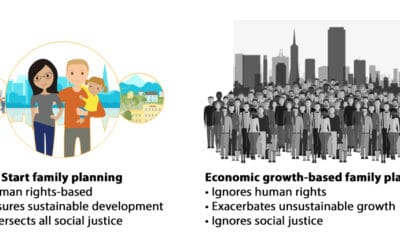News
Learn About the Fundamental Driver of the Crises We Face
Join Us: May 15 – Saving the Next Generation: Climate & Inequity
Dear Friend, Join Fair Start Movement, Rejoice Africa Foundation, and partners and allies for a virtual dialogue with Uganda’s NGO Bureau: May 15, 2015, at 9:00 a.m. ET. Register at Fairstartmovement.org/NextGen.We’ll explore bold, collaborative strategies to...
Urging Melinda French Gates to Tell the Truth. Take Action.
Melinda French Gates recently said this about what the wealthy owe others: "Great wealth does not shield you," French Gates says. "I have an absurd amount of wealth and I'm doing my very best to give it away. … But what I want people to know is that I'm a human being...
Children’s Rights Must Not Be Overlooked
A Voice From Mwesigye Robert, Zahara Nabakoza , Esther Afolaranmi and Betty Martin-Finneran. The voices from Africa, and of black communities in the United States, are rising against the fundamentally illegal standards that violate children's rights in poor regions...
Urge Peter Singer to Acknowledge the Truth
This year, Fairstartmovement.org is launching the Tell the Truth campaign, calling on prominent social justice figures to acknowledge their failures as the climate crisis worsens and claims millions of lives. At the root of these failures is the neglect of a...
Don’t Get Scammed: Is Your Charity Going Backwards?
The climate crisis exposes a fundamental problem in public interest work: how can a system that perpetuates inequality and environmental destruction be truly in the public interest? Millions will die from heat waves, yet many charities and funders claim to be helping...
How Fake Liberals Enabled Musk and the Climate Crisis And Why Real Change Goes Beyond Left vs. Right
In the mid-20th century, world leaders deliberately ignored the interests of future children and political equity when shaping reproductive rights. This likely stemmed from their unwillingness to invest in racially equitable birth, development, and emancipatory...
Macro Animal Rights and Critical Generational Studies
Humans are animals, and our birth and development—our creation—are the greatest determinants of nonhuman suffering. Our creation also fundamentally shapes how our legal systems function, particularly through participatory democracy and representation. However,...
Yes, You Created Musk and Trump. Take Action
If you see Trump and Musk as threats to democracy, ask yourself: What has your company done—at the most fundamental level of empowering children at birth—to actually protect democracy? Does your company’s cost/benefit analysis account for ensuring children are born...








